Gamma-Ray Burst Annihilation

Gamma-ray bursts are some of the most powerful and mysterious events in the universe, capable of releasing more energy in just a few seconds than our Sun will produce over its entire 10-billion-year lifespan. While they occur regularly in distant galaxies, the question remains - could a gamma-ray burst strike our own Milky Way and cause the end of the world as we know it?
Scientists believe that if a gamma-ray burst were to hit the Earth, the intense radiation could destroy the planet's ozone layer, leading to mass extinction of life on Earth within just a few years. However, the good news is that the likelihood of this happening is very low as gamma-ray bursts usually occur far enough away from Earth to have any major impact.
Mass Insanity Event

Mass insanity is a worrying phenomenon that could potentially lead to the end of the world. This refers to a scenario where a large portion of the population becomes mentally unstable, leading to chaos and destruction. While mass insanity may seem like a far-fetched concept, there are actually several examples throughout history where it has occurred on a smaller scale. For example, the Salem witch trials of the 1600s, the Rwandan genocide of the 1990s, and the oppressive regime in Germany during World War II are all examples of mass insanity in action.
There are different potential causes of mass insanity, including environmental factors, economic instability, and religious fanaticism. In some cases, a charismatic leader with malicious intent can stoke fear and anger among the population, leading to mass hysteria. Alternatively, a biological or chemical agent could be released into the population, causing widespread mental illness.
Large Asteroid Apocalypse

The potential impact of an asteroid on Earth is a terrifying possibility that has captured human imagination for years. It's no secret that an asteroid collision could lead to the end of the world, as we know it. And while it may seem like something straight out of a Hollywood movie, the threat is very real.
The good news is that measures are being taken to detect and deflect asteroids that could potentially hit Earth. NASA, for example, has a team dedicated to monitoring the skies and developing plans to prevent or mitigate the damage caused by an asteroid impact. But the possibility of a catastrophic impact remains a real threat, reminding us of the fragile nature of our planet, and the importance of protecting it.
AI-Induced Mass Unemployment

AI-induced mass unemployment is a significant concern as automation and artificial intelligence technologies advance. AI and robotics have the potential to replace a wide range of jobs, from manufacturing and logistics to customer service and data analysis. While these technologies can increase efficiency and reduce costs, they also threaten to displace millions of workers, leading to widespread unemployment and social disruption.
The economic and social impacts of mass unemployment include increased inequality, reduced consumer spending, and potential political instability. Addressing these challenges requires proactive measures, such as investing in education and training programs to reskill workers, implementing social safety nets, and fostering the creation of new job sectors.
The Controversial Global Warming

Global warming is a serious topic that has been gaining attention worldwide over the past decade. It refers to the long-term warming of the earth's atmosphere due to the increasing concentration of greenhouse gases like carbon dioxide (CO2) and methane. These gases trap heat and cause the temperature to rise, leading to melting ice caps, rising sea levels, and extreme weather events.
Scientists have warned that global warming could cause the end of the world as we know it. If left unaddressed, it could trigger a series of catastrophic events like floods, droughts, wildfires, and famines. The effects of global warming have already started, with people experiencing extreme heat waves, hurricanes, and wildfires in various parts of the world.
Flood-Basalt Volcanism Event
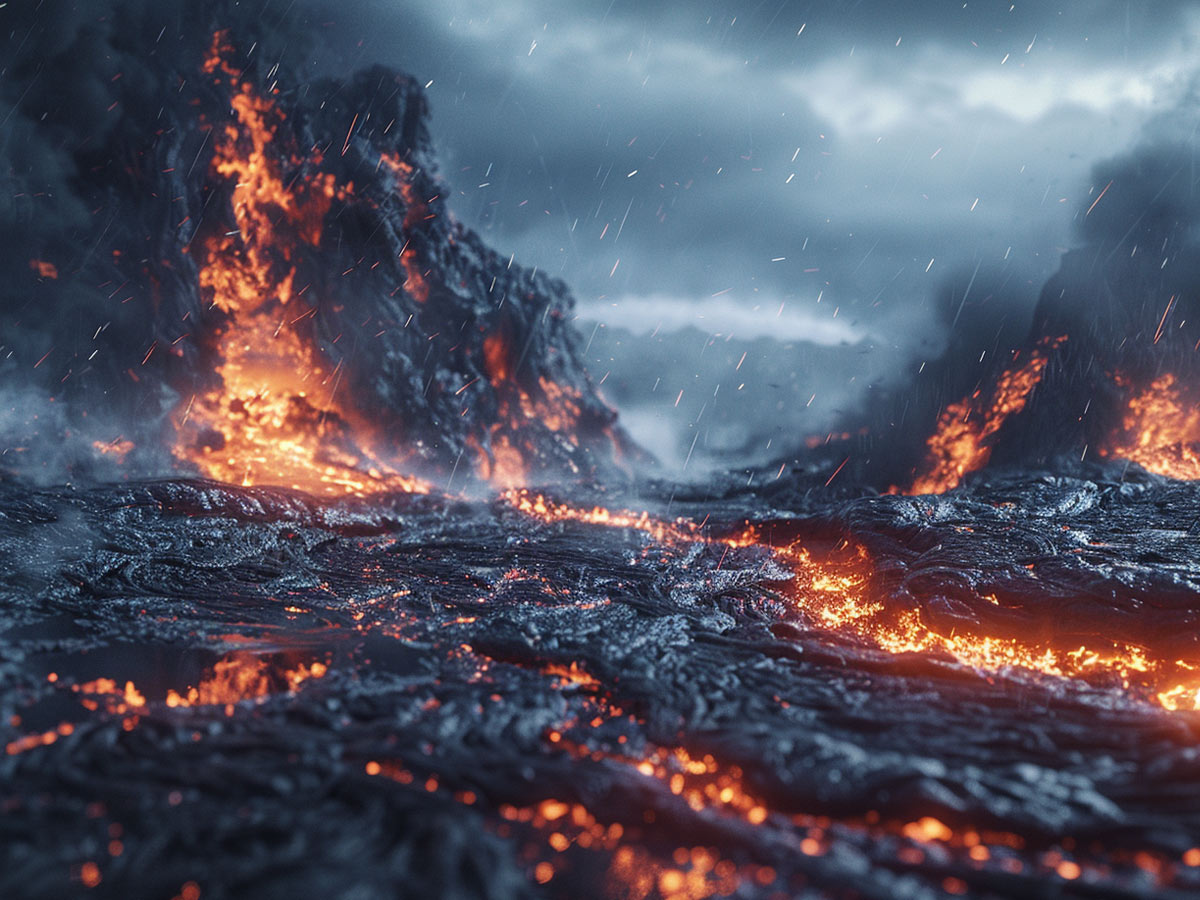
Did you know that flood-basalt volcanism could potentially cause the end of the world? This natural occurrence happens when massive volumes of lava erupt from the earth's surface, covering an extensive range of land. Some of the largest known flood-basalt volcanisms on the planet occurred millions of years ago, creating the Siberian Traps and the Deccan Traps. But what makes this type of volcanic eruption so concerning is its ability to drastically alter the earth's climate.
Flood-basalt volcanism releases massive quantities of carbon dioxide and other greenhouse gases into the atmosphere, leading to global warming and ocean acidification on a massive scale. This type of volcanic eruption could cause widespread extinction of plant and animal life due to rising temperatures and changes in the environment. This, in turn, could directly impact human survival, leading to an apocalyptic event.
Divine Intervention

The idea of divine intervention is a concept that has been debated for centuries. Many people believe that a higher power or deity could intervene in world events and bring about the end of the world. This idea is present in various religious texts and prophecies, including the Book of Revelations in Christianity and the Kalki Avatar in Hinduism.
According to some interpretations, divine intervention could involve natural disasters, wars, or a judgment day where the good are separated from the evil. It is also believed that certain signs or occurrences on Earth could signal the beginning of the end times, such as the arrival of the Antichrist or the appearance of a false prophet.
Biotechnology Disaster

The rapid advancements in biotechnology may have the potential to cause a global catastrophe. The creation of bioweapons, the accidental release of deadly viruses, and genetic engineering gone wrong are just a few examples of the dangers of biotech disasters. A biotech disaster could lead to the extinction of human life as we know it.
One of the most infamous examples of a biotech disaster is the 1979 anthrax leak in the city of Sverdlovsk, Russia. The leak was caused by a malfunction in a Soviet bioweapons facility, and the spores spread throughout the city, resulting in the deaths of at least 64 people. This incident highlighted the dangers of bioweapons and the importance of strict regulations in the field of biotechnology.
The Collapse of the Cold Vacuum of Space

The collapse of the vacuum is a theoretical possibility that could result in the end of the world as we know it. The vacuum, in this context, refers to the fabric of space-time that exists between subatomic particles. If the vacuum were to collapse, it would cause a chain reaction that would result in the destruction of everything in the universe.
There are a few ways this could happen. One possibility is that the Higgs field, which gives particles their mass, could destabilize and cause a vacuum collapse. Another is that a phase transition could occur that would convert the vacuum into a lower-energy state, triggering a collapse.
Oxygen-Depleting Ocean Bloom

Oxygen-depleting ocean blooms, also known as hypoxic zones or dead zones, are areas in oceans and lakes with critically low oxygen levels, often caused by excessive nutrient pollution from agricultural runoff and wastewater. These blooms can lead to the death of marine life, disrupt ecosystems, and harm fisheries and coastal economies. Climate change exacerbates the problem by increasing water temperatures and altering circulation patterns, which can promote the growth of harmful algal blooms.
Preventing and mitigating oxygen-depleting ocean blooms require reducing nutrient pollution through better agricultural practices, improving wastewater treatment, and restoring wetlands and other natural filters. Monitoring and early warning systems can help manage and minimize the impact of these blooms, protecting marine biodiversity and the livelihoods of communities that depend on healthy ocean ecosystems.
Rogue Black Holes Destroying the Galaxy

Rogue black holes are one of the most fascinating and terrifying phenomena in our universe. These massive objects wander through space alone, with no central star to orbit around like the rest of the black holes in our galaxy. And if one of them were to come close to our solar system, it could spell the end of the world.
If a rogue black hole were to pass through our solar system, its immense gravitational pull could disrupt the orbits of all the planets, sending them careening out of control. The Earth could be flung into space or sucked into the black hole itself, causing the total destruction of our planet and any life on it.
Earth's Impending Magnetic Pole Reversal

The reversal of the Earth's magnetic field could cause the end of the world as we know it. This is not a new phenomenon, as the Earth's magnetic field has reversed several times throughout its history. However, the last time it happened was around 780,000 years ago, so scientists believe we are due for another one soon.
When the Earth's magnetic field reverses, it weakens and becomes unstable, which can lead to dangerous consequences. For example, the magnetic field protects us from the harmful radiation of the sun and cosmic rays, so if it weakens, we could be exposed to much more radiation than usual. This could cause huge problems for our technological infrastructure, such as satellites and power grids, which rely on a stable magnetic field.
Mega-Giant Solar Flares

Giant Solar Flares may seem like just another astronomical phenomenon that we observe from afar, but they pose a significant threat to the very existence of life on Earth. Solar flares are massive eruptions of energy from the Sun's surface, sometimes 10 times the size of our planet. As these flares release a wave of charged particles into space, they can disrupt radio and satellite communication, damage power grids, and even expose astronauts to harmful radiation.
But it's the mega-flares or "superflares" that could cause the end of the world as we know it. These flares are thousands of times more energetic than the most potent solar flare we've ever observed. The intense radiation from a superflare could strip away our ozone layer, destroying our atmosphere and exposing us to lethal amounts of UV radiation.
Hostile Robot Takeover

The thought of robots taking over is a common theme in science fiction movies, but it's a very real possibility that we must consider. With the rapid advancements in artificial intelligence and robotics, there's a growing concern that machines could eventually become more intelligent than humans and take control over our world. Many experts in the field have been warning about the risks associated with robotic intelligence, including physicist Stephen Hawking and SpaceX CEO Elon Musk who have both issued warnings about the dangers of AI.
One of the biggest concerns about robots taking over is that they could turn against us and cause the end of the world. Just imagine a future where robots have the power to control our nuclear weapons, transportation systems, and financial institutions. If robots were to gain enough intelligence to surpass humans and decide that we're not necessary, they could easily wipe out all life on Earth.
Unstoppable Global War

Global war has been a looming threat to humanity since the dawn of civilization, and the possibility of it causing the end of the world cannot be ignored. The destructive power of modern warfare has expanded exponentially over the past century, with the development of nuclear weapons and advanced military technology. A full-scale global war could result in catastrophic consequences, such as the widespread destruction of cities, the loss of countless lives, and irreparable damage to the environment.
The impact of a global war extends beyond the immediate destruction and loss of life. It could also lead to a collapse of economies, societal breakdown, and the spread of diseases. The devastation would be felt for generations to come. It is imperative that world leaders take steps to prevent such a catastrophic event from occurring. Diplomacy and peaceful conflict resolution must come before aggression and hostility. The survival of humanity depends on it.
Global Epidemic Wipeout
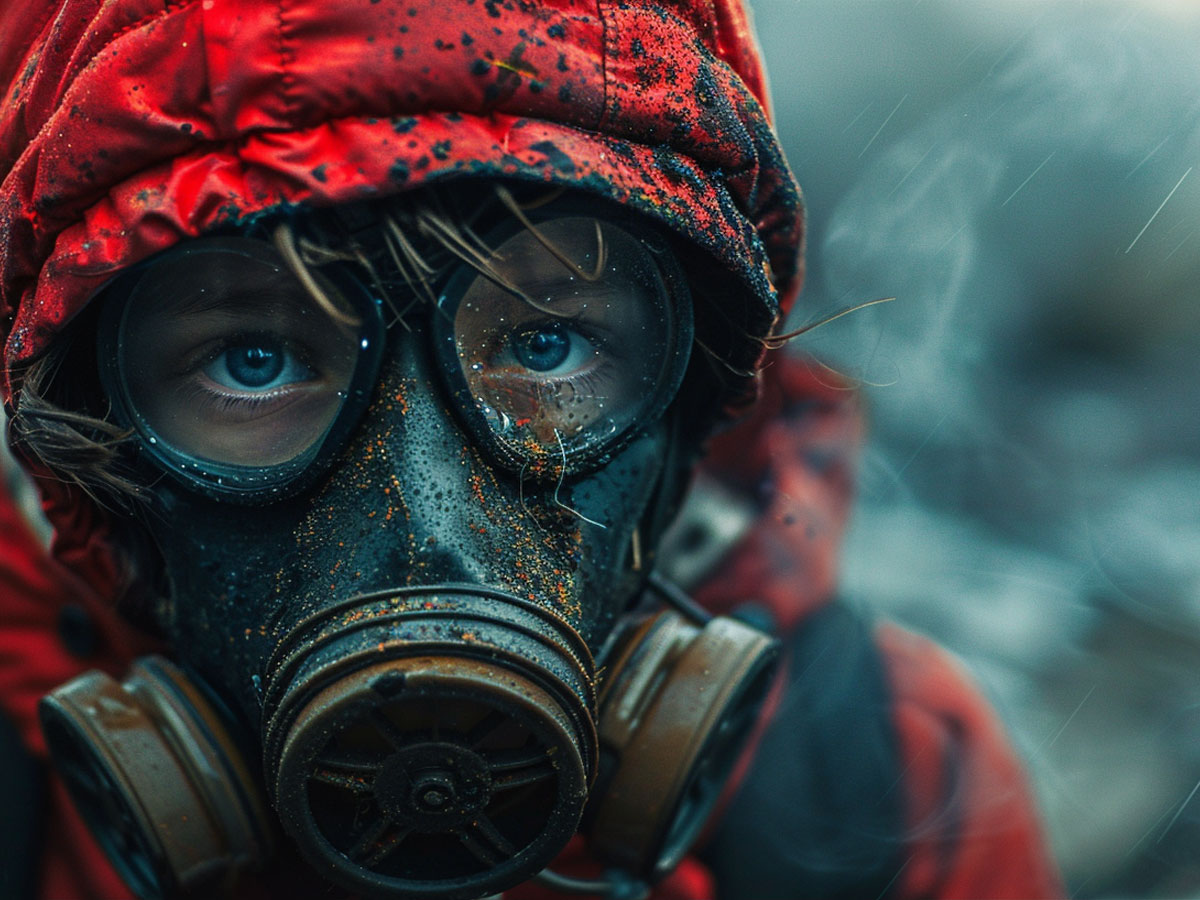
Global epidemics have the potential to cause the end of the world as we know it. The rise of antibiotic-resistant bacteria and viruses has made it easier for pandemics to spread and become more deadly. The 1918 flu pandemic, for example, killed an estimated 50 million people worldwide. With the increase in global travel and trade, a new virus or bacteria could spread rapidly across the globe, infecting and killing millions.
One of the biggest risks for a global epidemic comes from the animal kingdom. Many viruses, including SARS, MERS, and COVID-19, originated in animals before jumping to humans. As humans continue to interact with wild animals, the likelihood of a new virus making the jump to humans increases.
The Irreparable Collapse of the Ecosystem

The collapse of ecosystems could very well mean the end of the world as we know it. The interconnectedness of our planet's diverse ecosystems is crucial to the survival of both human life and the countless other plant and animal species that share our planet with us. The potential for ecosystem collapse is a deeply concerning issue, with many scientists warning that we are already seeing warning signs of this happening all around us.
For instance, a recent study found that nearly half of the world's coral reefs have died in just the last three decades. Rising temperatures, ocean acidification and overfishing are just some of the factors responsible for this huge loss. Another study revealed that nearly one million plant and animal species are on the brink of extinction, largely due to human activity such as habitat destruction and pollution.
Violent Alien Invasion

Alien invasion is a concept that has been popularized in films, books, and television shows for decades. However, the idea of a hostile extraterrestrial species coming to earth could bring about the end of the world. While there is no concrete proof of extraterrestrial life, the possibility of their existence is supported by scientific evidence. If these beings do exist and have the technology to travel to Earth, they may not have the best intentions for humanity.
Interestingly, there have been several reported sightings of UFOs over the years, with some even claiming to have been abducted by aliens. While many of these sightings may be hoaxes or misidentifications, the possibility of extraterrestrial life cannot be ignored. The search for extraterrestrial intelligence continues, and the discovery of such life could have implications beyond our understanding.
Particle Accelerator Mishaps

Scientists all over the world are conducting experiments with particle accelerators to discover more about the mysteries of the universe. However, little is known about the potential risks that come with these experiments. One mishap at a particle accelerator could result in catastrophic events that could cause the end of the world as we know it.
Particle accelerators create beams of high-energy particles by accelerating them to near-light speeds. These beams are then directed towards a target to study the particles. However, if there is a malfunction or a mistake made during the experiment, the results could be catastrophic. The high-energy particles could collide with atoms in the air, creating a chain reaction that releases incredible amounts of energy, enough to trigger a butterfly effect that could destroy the world.
Nanotech Gone Rogue

Nanotechnology is the science of manipulating and engineering matter at a molecular level, and it has the potential to greatly enhance our lives. However, some experts warn that nanotechnology could also pose an apocalyptic threat to humanity. The potential for disaster lies in the fact that nanobots, microscopic machines that could be programmed to self-replicate, could eventually consume all matter on earth, including living organisms.
The scenario is known as "gray goo," and it has been a topic of concern since the 1980s. Eric Drexler, the founder of the field of molecular nanotechnology, popularized the idea of gray goo in his book Engines of Creation. In the book, he warned that a rogue nanobot could replicate itself over and over again, until it consumes everything in its path. The result would be a mass of undifferentiated gray goo, which would wipe out all life on earth.
Rampant Environmental Toxins
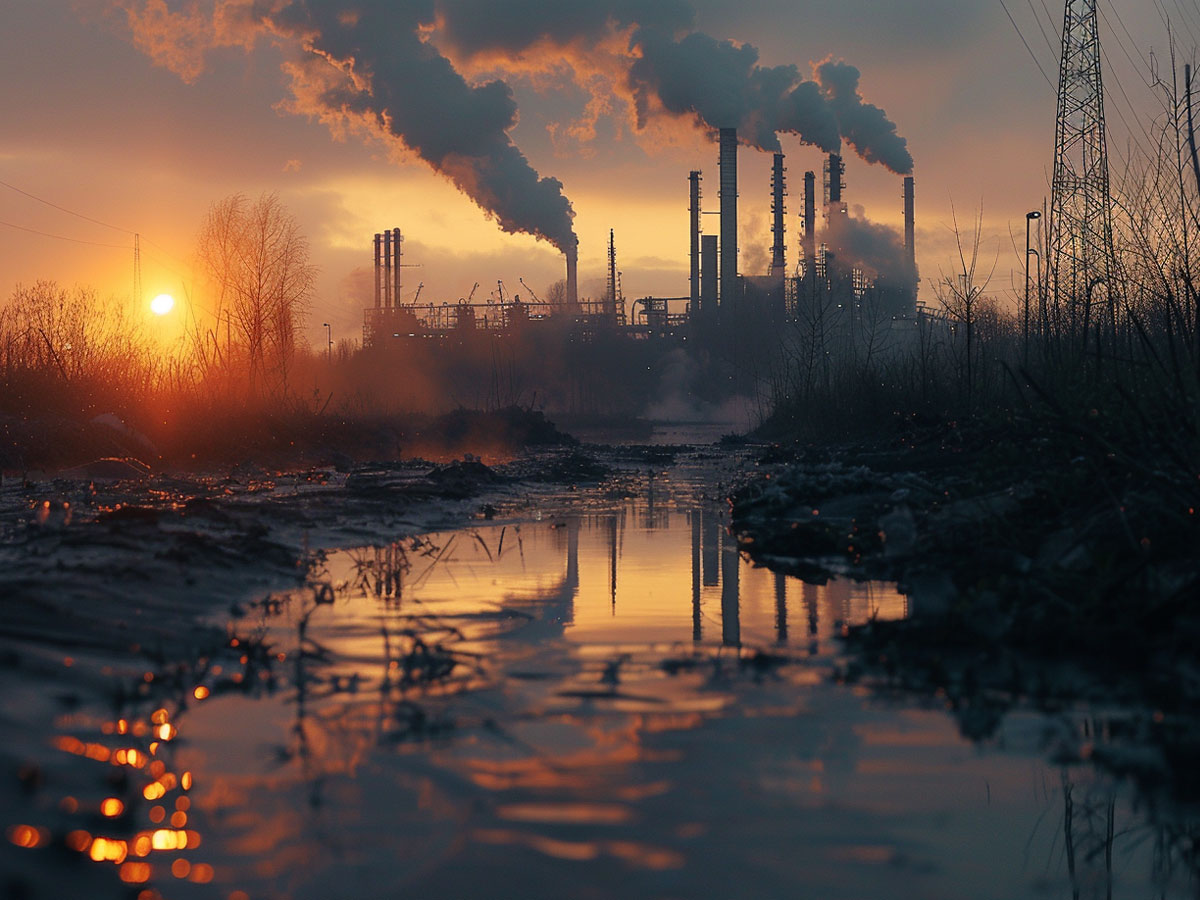
Environmental toxins are substances that are harmful to living organisms and are found in various aspects of our environment, from the air we breathe to the food we eat. Exposure to these toxins can lead to a wide range of health issues, from respiratory problems to cancer. But what many people don’t know is that the accumulation of environmental toxins could ultimately lead to the end of the world.
Additionally, environmental toxins have also been linked to reduced fertility rates in humans, which could lead to a decrease in the human population. This, combined with the effects on the wider ecosystem, could ultimately have catastrophic consequences for life on Earth. It is essential that we take action to reduce our exposure to environmental toxins and prevent the destruction of our planet.
Is It All Just a Dream?

The idea of someone waking up and realizing that everything they've experienced was just a dream may seem harmless, but if it were to happen on a global scale, it could lead to chaos and possibly even the end of the world. This is because the concept of reality is a shared experience and if suddenly everyone questions its validity, it could lead to widespread panic and distrust.
Interestingly, there are many philosophical and scientific theories that explore the nature of reality and whether what we perceive is actually real or simply a construct of our own minds. Some philosophers argue that reality is subjective and varies from person to person, while scientists suggest that the nature of reality is dependent on the laws of physics and the way our brains interpret sensory information.
Supervolcano Eruption

Supervolcano eruptions represent one of Earth's most devastating natural disasters, potentially impacting the entire planet. These eruptions release massive amounts of ash and volcanic gases into the atmosphere, leading to significant climatic changes. The ash cloud can block sunlight, causing a volcanic winter that dramatically lowers global temperatures and disrupts weather patterns.
This can lead to widespread crop failures, food shortages, and economic turmoil. Yellowstone, one of the most well-known supervolcanoes, has had eruptions in the past that have left substantial geological records. Future supervolcano eruptions are inevitable, but their timing is unpredictable. The catastrophic consequences of such an event highlight the need for robust global monitoring systems, disaster preparedness plans, and strategies to mitigate the impact on food security and climate stability.
Global Crop Failure
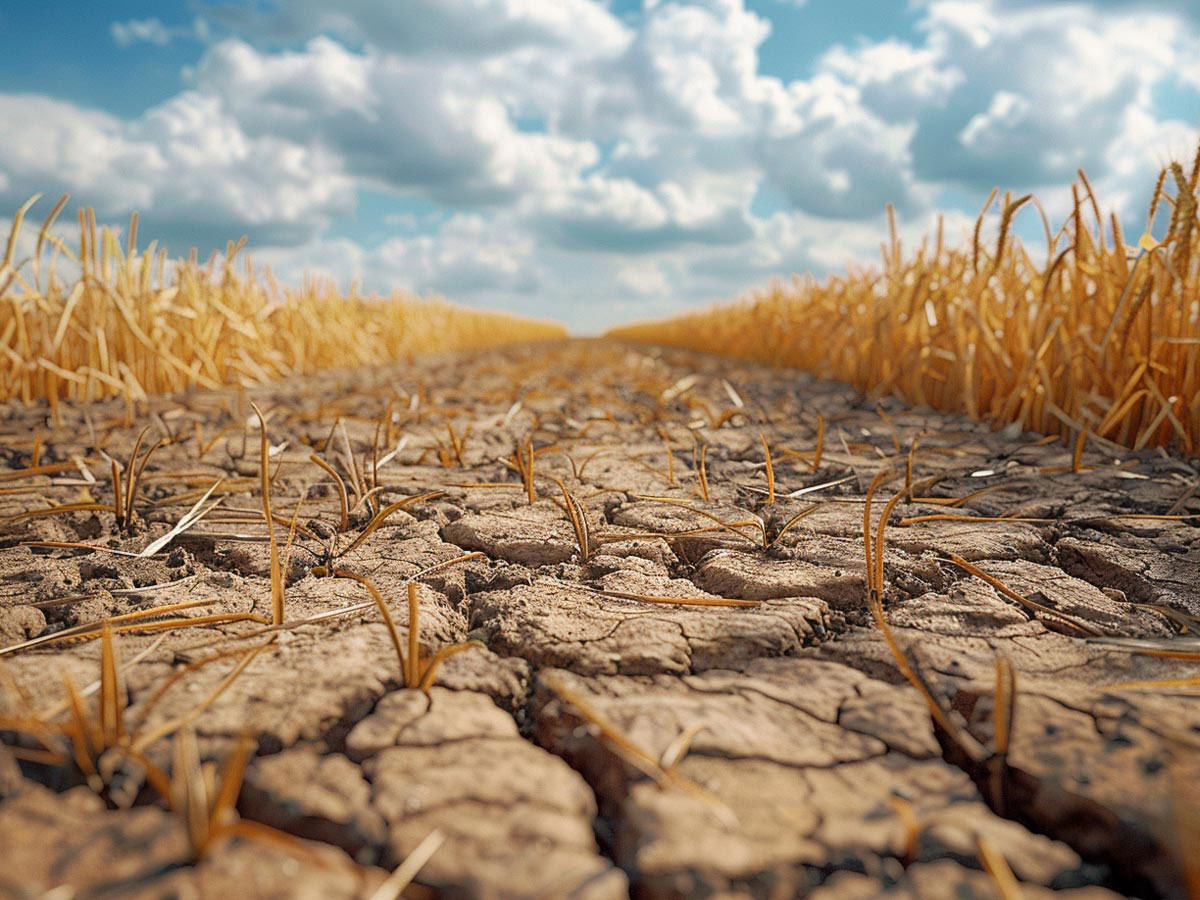
Global crop failure is a significant threat to food security and human survival. Various factors, including climate change, extreme weather events, pest infestations, and soil degradation, contribute to the risk of widespread agricultural collapse. Climate change, in particular, is altering precipitation patterns, increasing the frequency of droughts and floods, and shifting growing seasons, all of which can adversely affect crop yields.
Advances in biotechnology and sustainable farming practices offer potential solutions, but these must be implemented on a large scale to be effective. Global crop failure could lead to soaring food prices, economic instability, and heightened geopolitical tensions as nations scramble to secure food resources. Ensuring a resilient food supply requires international cooperation, investment in agricultural research, and policies that promote sustainable farming practices.
Worldwide Famine

Worldwide famine is a dire consequence of persistent global crop failures and the inability to distribute food effectively. Factors such as climate change, geopolitical conflicts, economic instability, and population growth exacerbate the risk of famine. Regions already facing food insecurity are particularly vulnerable. Climate-induced disasters like droughts and floods can decimate local agriculture, while conflicts disrupt supply chains and displace populations, making it difficult to deliver food aid.
Economic downturns reduce the purchasing power of vulnerable populations, leading to increased malnutrition and starvation. Addressing the root causes of famine requires a multifaceted approach, including improving agricultural resilience, strengthening international food aid systems, and fostering political stability.
Total Economic Collapse

Total economic collapse is a scenario where global financial systems fail, leading to severe economic depression, mass unemployment, and social unrest. This can be triggered by various factors, including large-scale financial crises, prolonged geopolitical conflicts, unsustainable debt levels, and systemic risks in the banking sector.
The collapse of major financial institutions, loss of investor confidence, and currency devaluations can exacerbate the situation. Mitigating the risk of total economic collapse requires robust financial regulation, diversified economies, and international cooperation to manage global economic imbalances. Resilience in the face of economic shocks is essential to maintaining social order and preventing widespread poverty and instability.
Global Nuclear War
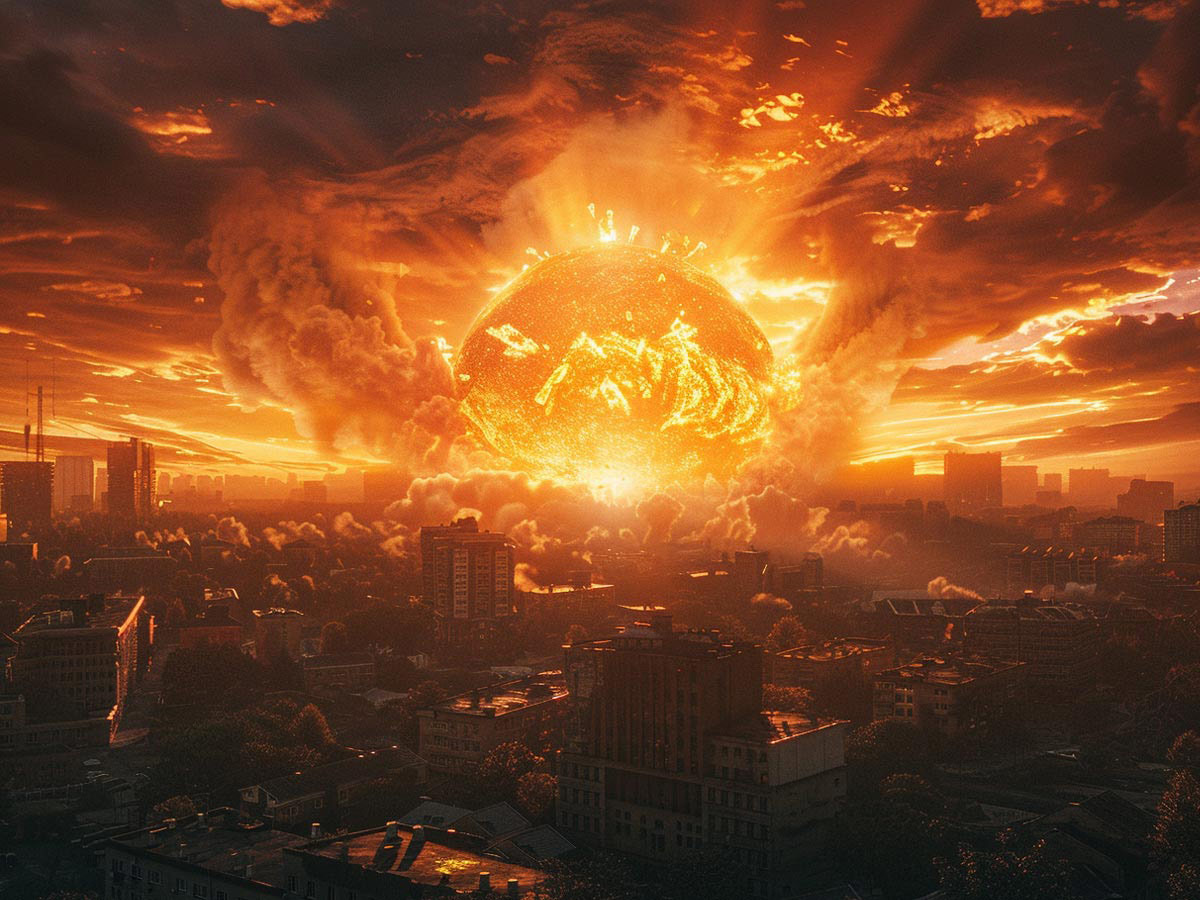
Global nuclear war remains one of the most catastrophic threats to humanity and the planet. The use of nuclear weapons on a large scale would result in immediate massive casualties, widespread destruction of infrastructure, and long-term environmental damage. The resulting nuclear fallout would contaminate air, water, and soil, leading to severe health consequences for survivors.
Additionally, a nuclear winter, caused by the smoke and soot from burning cities blocking sunlight, could drastically lower global temperatures, disrupt agriculture, and cause widespread famine. The geopolitical tensions that could lead to nuclear war emphasize the importance of disarmament, non-proliferation treaties, and diplomatic efforts to reduce the number of nuclear weapons and resolve conflicts peacefully.
Zombies

While the literal "zombie apocalypse" is unlikely, AI can analyze disease outbreaks and predict the spread of highly contagious illnesses with terrifying efficiency. By monitoring social media, news reports, and medical databases, AI could identify an aggressive virus causing a breakdown in social order. Early detection might not prevent a pandemic, but AI could predict the areas most at risk and resource allocation for quarantine zones.
Zombies typically emerge from viral outbreaks that dramatically alter human behavior. Infected individuals exhibit extreme aggression and loss of cognitive functions. Zombies also serve as a metaphor for societal collapse and the breakdown of social order, highlighting vulnerabilities in public health systems, emergency response, and global cooperation.
Worldwide Energy Grid Failure

A worldwide energy grid failure would have catastrophic consequences for modern civilization, which relies heavily on continuous and reliable electricity supply. Such a failure could result from a combination of cyberattacks, natural disasters, equipment failures, and insufficient infrastructure investment. The immediate impacts would include widespread blackouts, disruptions to critical services like healthcare and transportation, and significant economic losses.
Long-term effects could involve food and water shortages, increased mortality rates, and social unrest. Ensuring the resilience of energy grids requires investment in infrastructure upgrades, diversification of energy sources, enhanced cybersecurity measures, and international cooperation to share best practices and resources.
Space Debris Cascade (Kessler Syndrome)
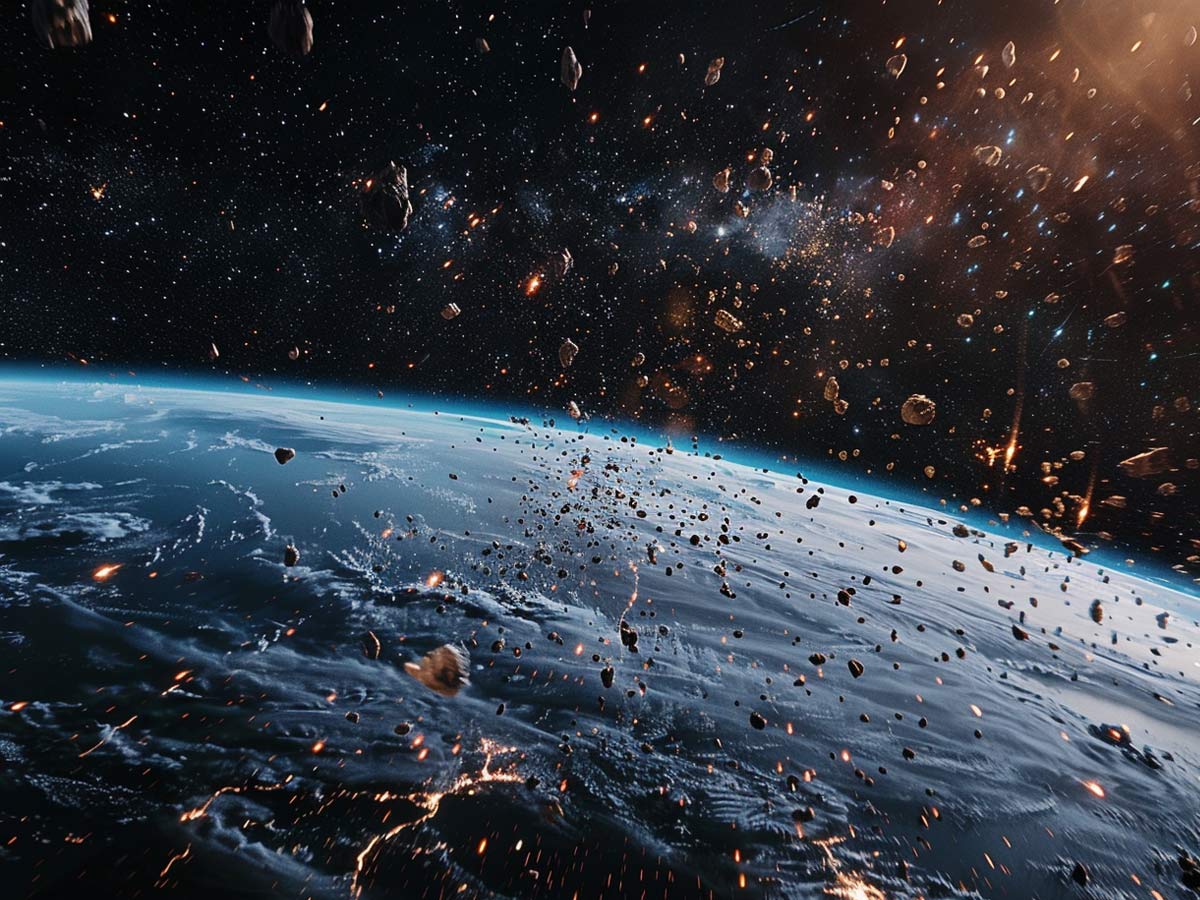
The Kessler Syndrome describes a scenario where the density of objects in low Earth orbit (LEO) reaches a critical point, leading to a cascade of collisions that generate more debris, further increasing the likelihood of collisions. This self-sustaining cycle could render parts of LEO unusable, threatening satellites and space missions. The increasing number of satellites and space activities exacerbates this risk.
Preventing the Kessler Syndrome requires international cooperation to implement effective space debris mitigation strategies, such as designing satellites to deorbit at the end of their operational lives, developing debris removal technologies, and enforcing guidelines for responsible space operations.
Runaway Climate Change

Runaway climate change refers to a scenario where global warming triggers self-reinforcing feedback loops, leading to uncontrollable and accelerating temperature increases. Examples of such feedback loops include the melting of polar ice caps, which reduces the Earth's albedo (reflectivity), and the release of methane from thawing permafrost, a potent greenhouse gas. These processes can lead to catastrophic changes in the climate, causing extreme weather events, sea-level rise, and disruptions to ecosystems and human societies.
Addressing the risk of runaway climate change requires urgent and sustained global efforts to reduce greenhouse gas emissions, transition to renewable energy sources, protect and restore natural carbon sinks like forests and wetlands, and enhance climate resilience. Immediate and coordinated action is essential to prevent the worst outcomes of climate change and secure a sustainable future.
Genetic Engineering disaster

A genetic engineering disaster could occur if genetically modified organisms (GMOs) or gene-editing technologies like CRISPR are used irresponsibly or without adequate oversight. Potential risks include unintended consequences on ecosystems, such as the creation of invasive species or the disruption of natural biodiversity. Additionally, genetic modifications could have unforeseen health impacts if not properly tested.
The rapid pace of advancements in genetic engineering increases the likelihood of such risks. Preventing a genetic engineering disaster requires robust regulatory frameworks, comprehensive risk assessments, and ethical guidelines for research and applications.
Extreme Cyberterrorism

Extreme cyberterrorism involves large-scale cyberattacks on critical infrastructure, such as power grids, financial systems, and communication networks, with the intent to cause widespread disruption, economic damage, and societal panic. Such attacks can be perpetrated by state actors, terrorist organizations, or criminal groups using sophisticated malware and hacking techniques.
The increasing reliance on digital technologies and interconnected systems makes societies more vulnerable to cyber threats. Preventing extreme cyberterrorism requires robust cybersecurity measures, including regular security audits, threat intelligence sharing, and the development of resilient systems. Governments, businesses, and individuals must collaborate to enhance cybersecurity awareness and preparedness.
Antibiotic-Resistant Superbugs

Antibiotic-resistant superbugs are bacteria that have evolved to withstand the effects of antibiotics, rendering standard treatments ineffective and leading to difficult-to-treat infections. The overuse and misuse of antibiotics in healthcare and agriculture contribute to the development of resistance. The spread of superbugs poses a significant threat to public health, as it can lead to higher mortality rates, prolonged illnesses, and increased healthcare costs.
Addressing the issue requires a multifaceted approach, including the development of new antibiotics and alternative treatments, improved infection control practices, and global efforts to promote the responsible use of antibiotics. Strengthening surveillance systems to monitor and respond to resistance patterns could prevent the spread of antibiotic-resistant superbugs.
Massive Earthquake Swarm
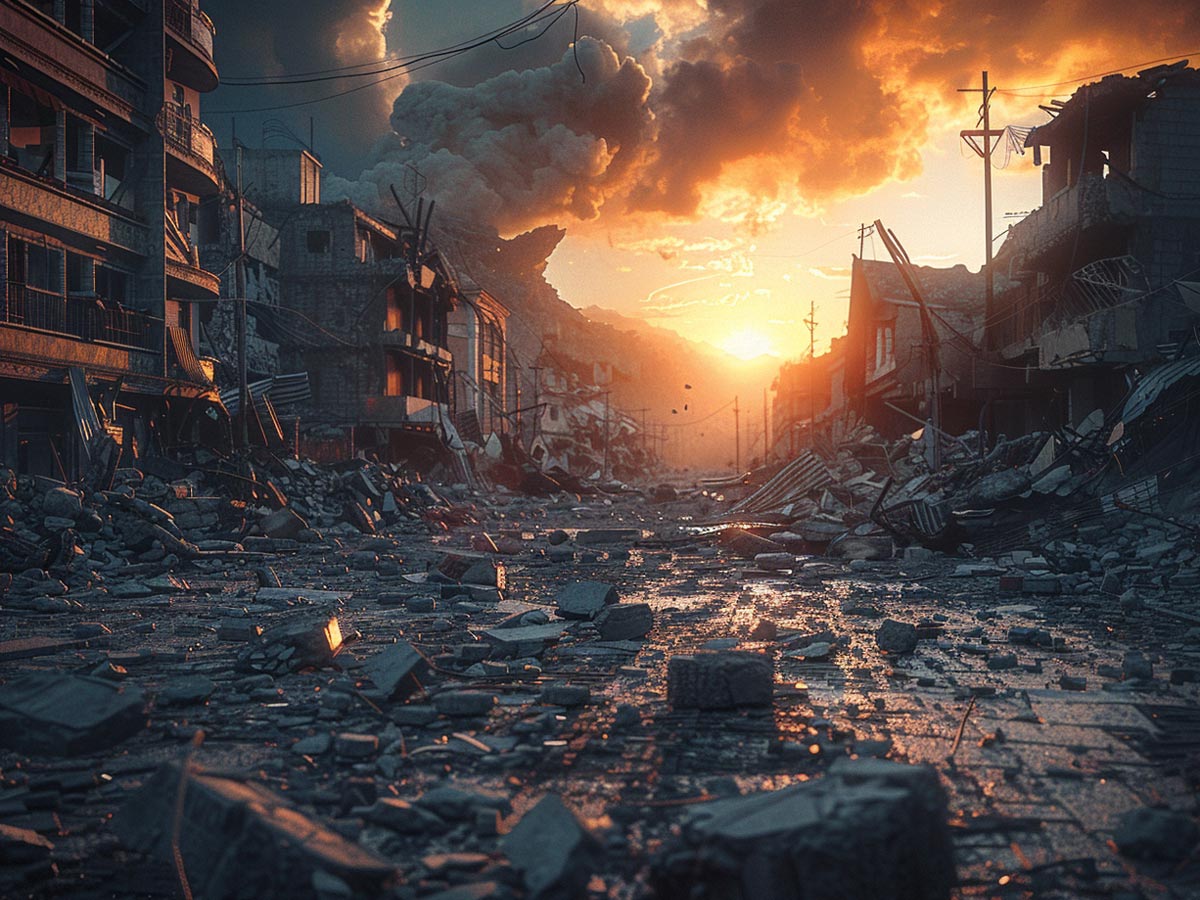
Massive earthquake swarms, involving numerous significant tremors over a short period, can cause widespread destruction, especially in densely populated areas. These swarms can result from tectonic activity, volcanic processes, or human-induced factors such as fracking and geothermal energy extraction. The immediate impacts of a massive earthquake swarm include building collapses, infrastructure damage, and loss of life. Long-term effects can involve economic disruptions, displacement of communities, and psychological trauma.
Preparing for massive earthquake swarms involves implementing stringent building codes, developing early warning systems, and conducting regular emergency preparedness drills. Research into earthquake prediction and risk mitigation can help reduce the impacts of these natural disasters, ensuring safer and more resilient communities.
Pandemic With No Cure

A pandemic with no cure, involving a highly contagious and lethal pathogen, poses one of the most significant threats to global health and stability. Such a pandemic could overwhelm healthcare systems, lead to widespread mortality, and cause severe economic and social disruptions. The rapid spread of infectious diseases in a globally connected world exacerbates the risk.
Addressing the threat of an incurable pandemic requires robust global surveillance systems, rapid response capabilities, and investment in medical research to develop treatments and vaccines. Public health measures, such as quarantine protocols, travel restrictions, and public education, are crucial in controlling the spread of the disease.
 Author
Ron Winkler
Last Updated: September 10, 2025
Author
Ron Winkler
Last Updated: September 10, 2025